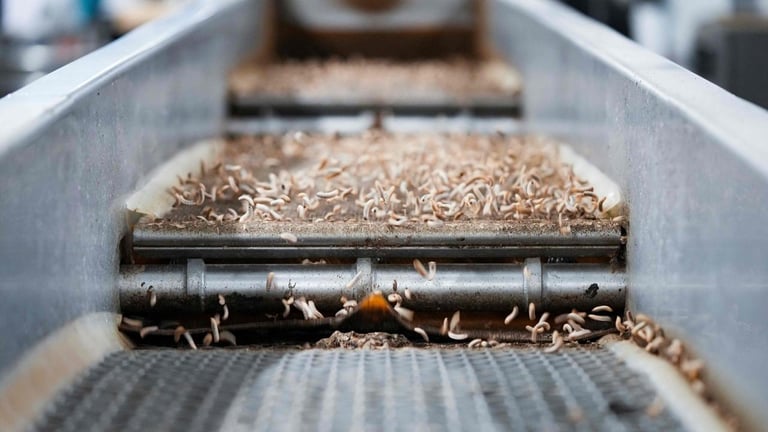Black Soldier Fly Larvae: Transforming Waste into Sustainable Animal Feed
August 25, 2024
A recent study explores the use of black soldier fly larvae (BSFL) to process slaughterhouse blood mixed with kitchen waste, addressing significant environmental challenges related to waste disposal.
Researchers from the University of Copenhagen, including Nanna Roos, highlight that larva meal can serve as a sustainable alternative to more harmful animal feed, promoting a circular economy in livestock diets.
Despite the benefits, the cost of larva meal in Europe remains relatively high, necessitating increased production and potential regulatory changes regarding animal feed.
The findings suggest that BSFL can effectively utilize slaughterhouse blood as a feed component, contributing to sustainable waste management and enhancing animal feed production.
In experiments, BSFL fed a diet containing up to 20% slaughtered blood mixed with kitchen waste showed improved weight gain and nutrient composition, including higher crude protein and amino acid content.
Edible insects like BSFL have a lower environmental footprint compared to traditional protein sources, primarily due to their high feed conversion efficiency.
BSFL are considered essential components of the circular economy, contributing to waste reduction and resource recovery in agricultural systems.
Currently, BSFL is not approved for human consumption in the EU due to its strong flavor, although efforts are underway to change this.
In Denmark, a large facility is mass-breeding black soldier fly larvae, which can consume a wide range of organic waste, further supporting sustainable waste management.
The demand for sustainable protein sources is rising due to population growth and climate change, making BSFL an attractive option for poultry production.
This research adds to the growing evidence supporting the use of insect larvae as sustainable feed alternatives, particularly in the poultry industry.
Nutritional analysis revealed that the crude protein content in BSFL increased with higher proportions of slaughter blood, while crude fat content decreased.
Summary based on 4 sources